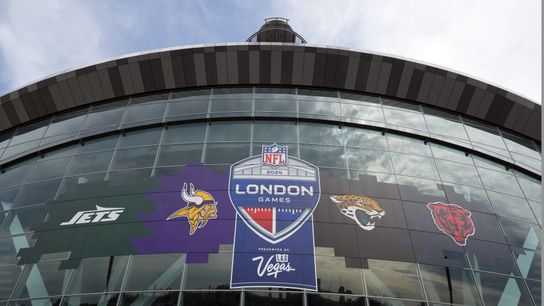Sunday has many different definitions across the world. For example, in the U.S., this coming Sunday may be interpreted as one week closer to the first full slate of NFL games in September. Residents of North London, England, however, will be spending this Sunday sweating out Arsenal versus Newcastle without a thought of American football.
With the NFL continuing its global push with the announcement of seven international games in 2025, the start of global expansion seems inevitable, even if it is still a few years away. Initial signs from the current scatter of international games suggest that this is an achievable and lucrative goal. League officials, however, would be wise to look at Major League Soccer as a source of advice when it comes to competing for fans as a foreign-centric sport.
In many ways, the MLS had an easier situation than the NFL does now. For starters, the MLS is only in North America, meaning that teams do not have to travel across continents just to play one or two games. It is unclear whether the NFL would start with one team or try to place an entire division in Europe, but it would require many hours of travel for players on both sides of the Atlantic. Additionally, soccer already had a stronger fan base in America than American football does anywhere else, whether due to immigration or simply the global appeal of the sport.
Despite these advantages, the MLS still struggled in the beginning. In its inaugural season, 1996, the league achieved a meager average attendance of 17,406, losing millions of dollars and eventually cutting two teams. For reference, the Premier League’s average attendance that year was more than 28,000. This should be a cautionary tale for the NFL, but it is also not the full story. In 2024, the MLS reached an average attendance of 23,234—the highest in league history. While profitability is still in question, their rise to subsistence provides the NFL with a few lessons.
The first takeaway is a warning against overconfidence. Part of the NFL’s belief in a booming global expansion is the success of its one-off games. The MLS, however, has shown that there is a major difference between one game a year and a full season. For example, last year, Inter Miami had an average attendance of almost 21,000 fans per game, while a 2022 non-Premier League Arsenal vs. Chelsea match brought in over 63,000 spectators.
The second lesson is the recipe for success: Hall of Fame players. MLS' two biggest popularity jumps were when the LA Galaxy signed David Beckham in 2007 and when Messi joined Inter Miami in 2023. It is still undecided if the NFL would do expansion drafts or simply move teams abroad, but either way, those teams must have real talent and household names on their rosters. That is how teams can attract new fans.
There are still many details to flesh out and many things that need to happen in the coming years for international expansion to come to fruition, and if it does, the NFL will definitely be fighting an uphill battle. If they do things right, they have a viable path to success, and with no issue fiscally supporting the early years, maybe one day the NFL can own a stake in Sundays across the world.
The next question is, will the players be on board?


